In recent years, the art world has undergone a seismic shift with the rise of digital art and non-fungible tokens (NFTs). This transformation is redefining creativity, ownership, and the ways we interact with art. As artists and collectors embrace this new medium, its essential to explore what digital art and NFTs mean for the future of artistic expression.
What is Digital Art?
Digital art encompasses a wide range of creative works that are created or manipulated using digital technology. From illustrations and animations to 3D models and virtual reality experiences, digital art offers artists a versatile canvas for their creativity. This form of art allows for experimentation with colors, textures, and forms that may not be possible with traditional media.
The accessibility of digital tools has democratized art creation. Software like Adobe Photoshop, Procreate, and Blender empowers artists to produce stunning works from their homes. As technology evolves, so do the methods and mediums available for digital artists, leading to an ever-expanding landscape of possibilities.
The Rise of NFTs
Non-fungible tokens (NFTs) have emerged as a revolutionary way to buy, sell, and trade digital art. Unlike cryptocurrencies such as Bitcoin, which are interchangeable, NFTs represent unique digital assets verified on a blockchain. This technology ensures authenticity and ownership, making it possible for artists to sell their work in a way that was previously unattainable in the digital realm.
NFTs allow artists to tokenize their creations, providing a new revenue stream and a way to reach global audiences. Artists can sell limited editions of their work, and secondary sales often allow them to earn royalties whenever their art is resold, creating ongoing financial benefits.
Impact on the Art Market
The emergence of digital art and NFTs has sparked debates about the nature of art and ownership. Traditionally, art has been associated with physical objects; however, the digital realm challenges these notions. Collectors are now investing in digital pieces, often purchasing them for significant sums. High-profile sales, such as Beeples digital collage selling for $69 million at Christies, highlight the potential financial value of digital art.
This shift has also led to increased visibility for artists who might not have found success in traditional galleries. Platforms like OpenSea, Rarible, and Foundation provide artists with marketplaces to showcase and sell their work directly to collectors, bypassing traditional gatekeepers.
Challenges and Criticisms
Despite its promise, the digital art and NFT space faces challenges. Concerns about copyright infringement, environmental impacts of blockchain technology, and market volatility are significant issues. The energy consumption associated with some blockchain networks has raised eyebrows, prompting calls for more sustainable practices.
Moreover, as the market becomes saturated with NFTs, questions arise about the long-term value and significance of digital art. Will it stand the test of time, or will it become a fleeting trend? Artists and collectors alike must navigate these uncertainties as they explore this evolving landscape.
Conclusion
Digital art and NFTs are reshaping the art world, offering new avenues for creativity and ownership. As artists embrace technology, they redefine how we perceive and interact with art. While challenges remain, the potential for innovation and connection in this space is immense. As we continue to explore digital art and NFTs, one thing is clear: the future of art is undeniably digital.




